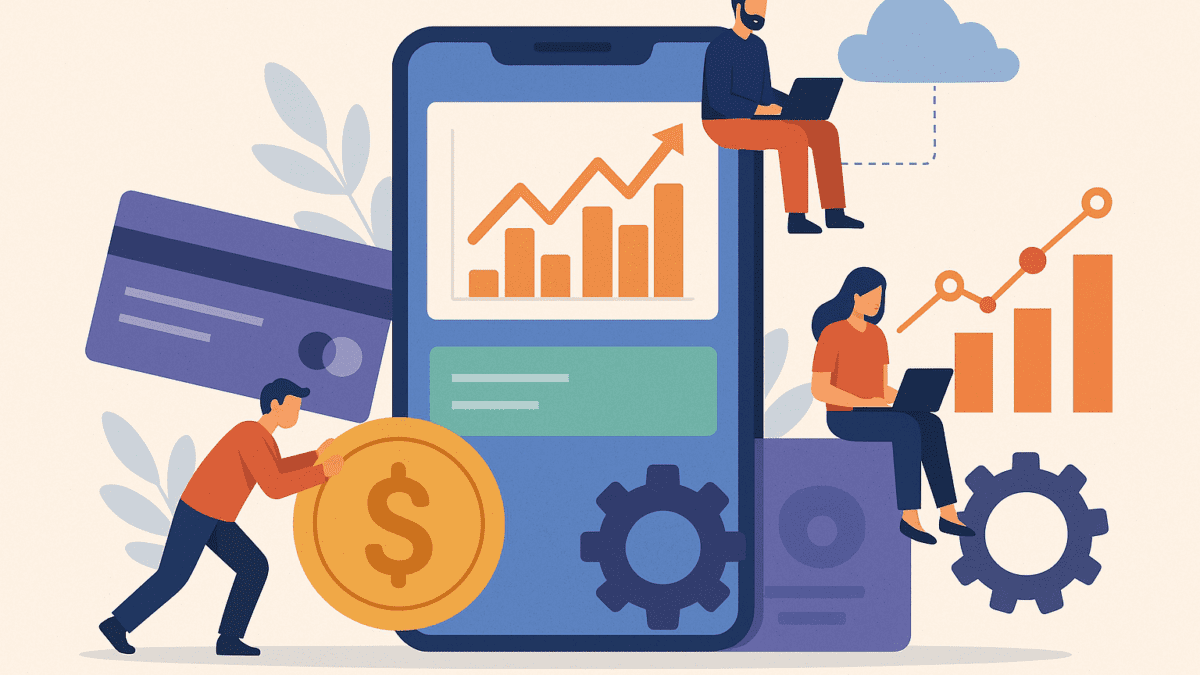Beyond Payments: How Fintech-as-a-Service (FaaS) is Powering the Next Wave of Digital Businesses
Table of Contents
Introduction
In 2025, Fintech-as-a-Service (FaaS)is becoming the backbone of modern digital business. From startups to global enterprises, companies are integrating financial capabilities—such as payments, lending, and insurance—into their platforms without building a bank from scratch.
At its core, FaaS enables businesses to plug-and-play financial services using APIs and third-party infrastructure. This modular approach not only speeds up deployment but also reduces compliance and development costs.
Why FaaS is Booming in 2025
The global FaaS market is expected to surpass $80 billion by 2027, driven by rising demand for embedded finance and financial product digitization.
Key Drivers:
- API-first economy: FaaS providers like Stripe, Synctera, and Solarisbank offer API integrations for payments, banking, and KYC.
- Customer expectations: Users now demand seamless financial experiences—like instant checkouts, flexible loans, and in-app wallets.
- Regulatory clarity: More defined rules in fintech compliance (e.g., eKYC, AML) have made it easier to launch with compliance baked in.
- Cost efficiency: Building a bank is expensive. FaaS helps businesses skip infrastructure and go straight to market.
Core Components of Fintech-as-a-Service
FaaS platforms provide ready-made financial services through easy integrations. These typically include:
Payment Processing
- Accept and send payments globally
- Popular providers: Stripe, Adyen, Rapyd
Banking-as-a-Service (BaaS)
- Virtual accounts, card issuance, and digital wallets
- Example: Solarisbank offers white-label banking services
Lending-as-a-Service
- Underwriting, risk management, and loan disbursement
- Providers: Amount, Lendflow, Galileo
Compliance & KYC
- Identity verification, fraud prevention, AML tools
- Tools: Alloy, Trulioo, ComplyAdvantage
How Businesses Are Using FaaS in 2025
Let’s break down how different sectors are adopting FaaS to gain a competitive edge:
Ecommerce Platforms
- Embed payments, BNPL (Buy Now Pay Later), and loyalty rewards into checkout
- Shopify integrates Stripe + Affirm for seamless buyer experiences
SaaS Companies
- Offer clients billing, invoicing, and payment gateways natively
- Example: FreshBooks integrates embedded payments with WePay
Ride-sharing & Gig Platforms
- Instant payouts to drivers, tipping, insurance—all via API
- Uber’s financial layer is now a case study in FaaS deployment
Edtech & Online Learning
- Enable course purchases, student financing, and microtransactions
- Teachable offers course creators Stripe-based payment modules
Benefits of Using FaaS
- Faster Time to Market: Launch fintech features in weeks—not years—by leveraging pre-built infrastructure.
- Lower Regulatory Burden: FaaS providers handle banking licenses, KYC/AML, and audits, reducing your overhead.
- Scalable Architecture: Add new services (e.g., loans, wallets) as your business grows without rewriting backend systems.
- Improved Customer Retention: Offering financial services directly in-app increases stickiness and customer lifetime value (CLV).
Challenges & Considerations
While FaaS is a game-changer, it’s not plug-and-play for every use case. Some things to keep in mind:
- Vendor Lock-in: Deep integrations make it hard to switch later—choose partners wisely.
- Data Privacy: Sharing financial data with third-party providers must align with local laws (e.g., GDPR, India’s DPDP Act).
- Brand Trust: Users may not recognize your FaaS vendor. You must still deliver a secure, branded experience.
Top FaaS Providers to Know in 2025
Here are some industry leaders enabling fintech infrastructure behind the scenes:
| Provider | Specialization | Headquarters |
|---|---|---|
| Stripe | Payments, Treasury, Fraud | USA |
| Synctera | BaaS, compliance, KYC | USA |
| Rapyd | Global payments & wallets | UK |
| Solarisbank | European banking-as-service | Germany |
| Marqeta | Card issuing & tokenization | USA |
| Unit | End-to-end embedded finance | USA |
Real-World Example: How a SaaS Startup Scaled with FaaS
A New Zealand-based accounting SaaS wanted to offer in-app payments, invoice financing, and real-time wallet features. Instead of building their own banking backend, they integrated:
- Stripe for payments
- Unit for lending-as-a-service
- Alloy for compliance
Result?
→ Decreased product launch time by 70%
→ Increased customer LTV by 22%
→ Stayed fully compliant without hiring a finance team
FaaS and the Future of Fintech
As financial services become invisible yet indispensable, FaaS is shaping up to be the infrastructure layer of future commerce. Whether you’re building a neobank, scaling a SaaS app, or launching a marketplace, FaaS lets you focus on growth—not regulations.
By 2027, embedded finance is expected to be a $384B market—and FaaS will be a key driver of that momentum.
See Also: What Are Bonds? A Beginner’s Guide for Fintech Investors





